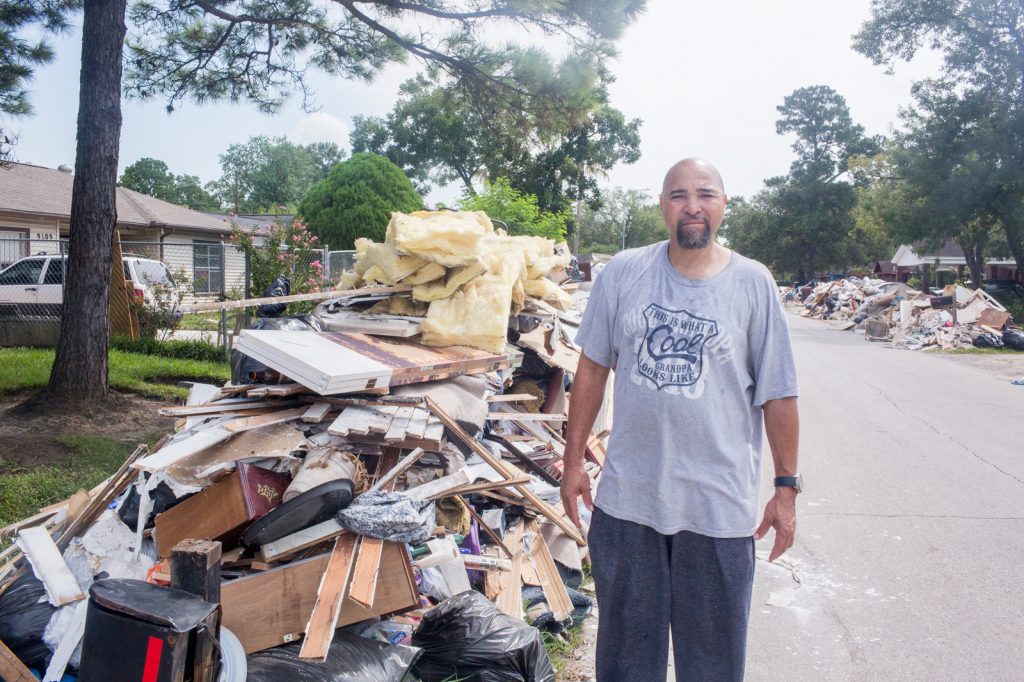
Photo Credit: Revolution Messaging, Public Domain 1.0
Very often, the struggle against climate change is framed as preventative. Under this framework, the truly damaging effects of global warming are flung out into the future. Thus, we are told to do something now in order to stop future disasters from occurring. There is, however, cause to question this framework. All we need to do is observe the devastation that has ransacked the United States and its territories during the past year. Records have been broken left and right. The damage is being done now.
Political Motivation
Not only does a future-oriented framework fail to capture the present state-of-affairs, it fails to motivate change. The Out of the Woods Collective articulates this position clearly: “[I]t’s wrong on an empirical level to figure climate change as this thing that will happen in the future, but I think it’s also unhelpful politically, because that kind of future threat I don’t think works as a sufficiently motivating force to affect things in the present – I think, like you say, it can be disempowering.”
Unequal Distribution
Those who disagree with the premise that the damage is being down now would do well to consider this fact: climate change does not distribute equally across class, race and gender differences. One person may very well feel like the world is a livable place – not yet rendered toxic by global warming – while another might have friends and family dying from diseases made possible by the presence of nearby toxic landfills, greenhouse-gas-producing facilities and incinerators.
Support
To illustrate: a lengthy report by the Environmental Justice and Health Alliance showed that, though Black people and Latinos make up less than 30 percent of the US population, they make up nearly half the population living in so-called fenceline zones. Fenceline zones are the areas immediately surrounding chemical plants and storage facilities, meaning the people living in these areas are vulnerable to disease and plant explosions.
The Cerrell Report
It is most likely no accident that people of color are disproportionately represented in fenceline zones. Companies have been known to actively seek out locations where socially marginalized communities dwell. The Cerrell Report, an oft-cited manual distributed by Cerrell Associates to the California Waste Management Board in 1984, explicitly identifies communities least likely to resist LULUs (Locally Undesirable Land Use).
Official Recommendations
In a paper entitled “Race, Class and the Global Politics of Environmental Inequality,“ Peter Newell, Professor of International Relations at the University of Sussex, outlines the report’s recommendations. They boil down to the following: avoid middle to high income areas, focus on areas with less-educated households, seek out conservative communities with small population sizes, target elderly communities, and seek out areas with people interested in working in pollution-producing industries. As Newell observes, “The consequence of these practices is much higher levels of exposure to toxics and subsequently higher levels of illnesses among minority communities.”
Political Response
At the highest levels of the American government little has been done to combat the racial and class disparities of climate change. Twenty-five years ago, Republican EPA Administrator Bill Reilly initiated the Office of Environmental Equity (now called the Office of Environmental Justice) under then-President George H.W. Bush who gave the program almost no money. And in 1994, President Bill Clinton signed an executive order directing agencies to consider the devastating impact of projects on marginalized communities.
Earlier this year, Mustafa Ali, the former head of the Office of Environmental Justice, left his post after 25 years of service upon hearing about the sweeping budget cuts proposed by the White House.
A glimmer of hope emerged in October from the office of Senator Corey Booker (D-NJ) when he announced a plan to introduce the Environmental Justice Act of 2017. The bill would bolster legal protections for people of color, indigenous communities and poor folks affected by climate change. In a sense, it would frame climate change as a phenomenon well underway and not something off in the future.
As noted by Esquire, the bill has almost no chance of passing. It does however signify a ray of light emanating from Congress, which is currently shrouded in darkness.



Leave a Comment